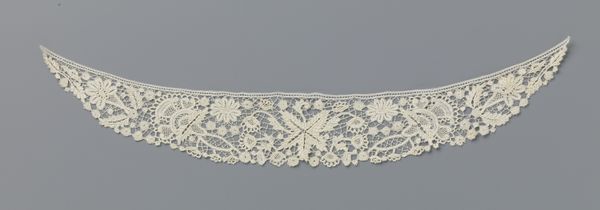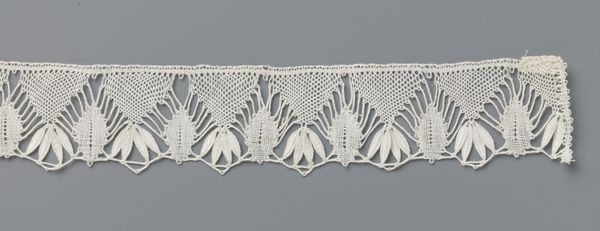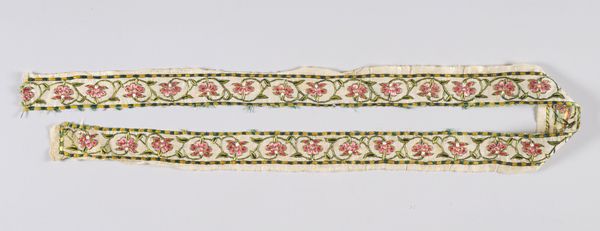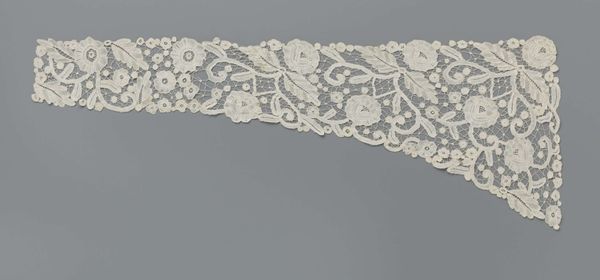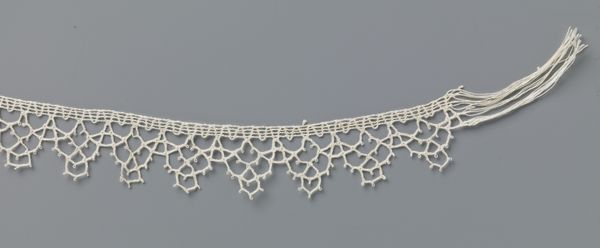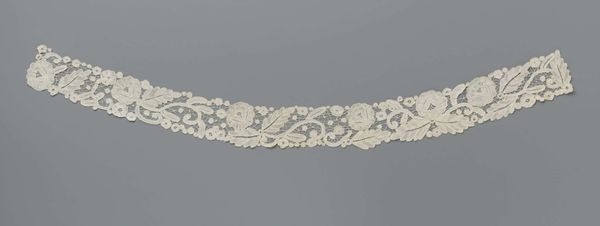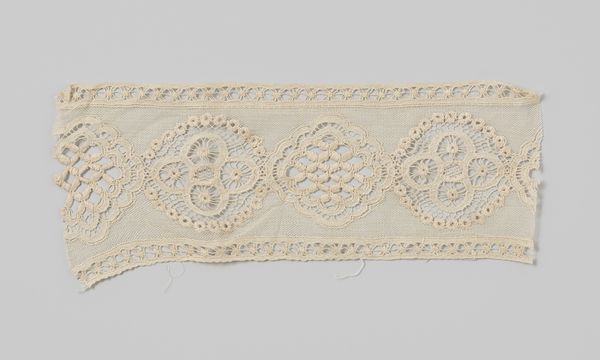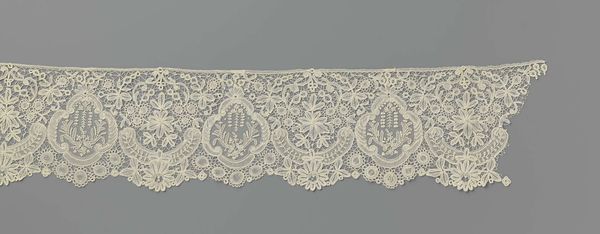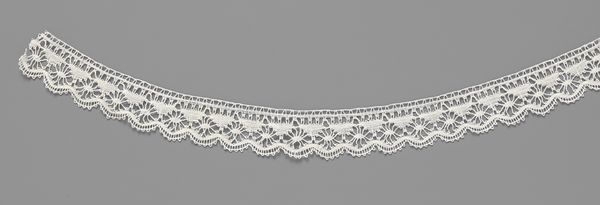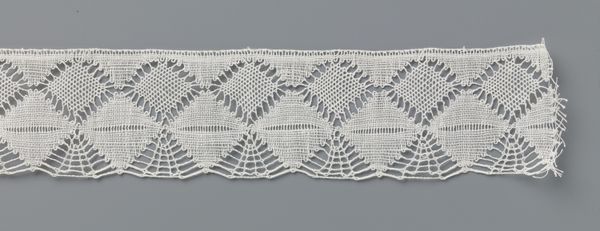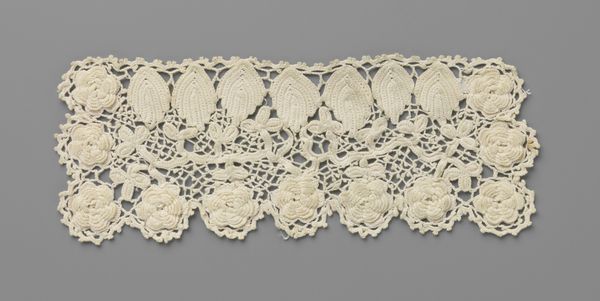
Dimensions: length 112 cm, width 2.5 cm, 1.3 cm
Copyright: Rijks Museum: Open Domain
Editor: Here we have a piece of bobbin lace, "Tussenzetsel van kloskant met getorste bandjes," created around the 1920s by the 's-Gravenmoersche Kantvereniging. It's such a delicate thing, so intricate. How would you approach analysing this piece? Curator: This lacework offers a window into the economic and social fabric of its time. Consider the material itself – linen or cotton threads, painstakingly worked. Who had access to these materials? Who possessed the skill, and the leisure, to create such an intricate piece? Was this a form of cottage industry, contributing to the household income? Editor: I hadn't thought of it in such practical terms. I was focusing on the aesthetics, the repeating pattern. Curator: The aesthetic choices are, of course, important. The Art Nouveau influences apparent in the flowing lines point to specific stylistic trends and consumer markets. But what kind of labour underpinned this? Was this individual artistry, or part of a larger system of production? Were women empowered by selling their craft, or exploited through low wages and long hours? These are the questions that truly animate the work. Editor: So you see this not just as decoration, but as a document of labour? Curator: Precisely. The material speaks volumes about the conditions of its making and the societal structures that shaped it. Editor: I guess looking at art this way helps see the connection between creativity, labour, and economic forces. Thanks, I’ve definitely learned a lot! Curator: It’s about looking beyond the surface to uncover the realities embedded within the threads.
Comments
No comments
Be the first to comment and join the conversation on the ultimate creative platform.


